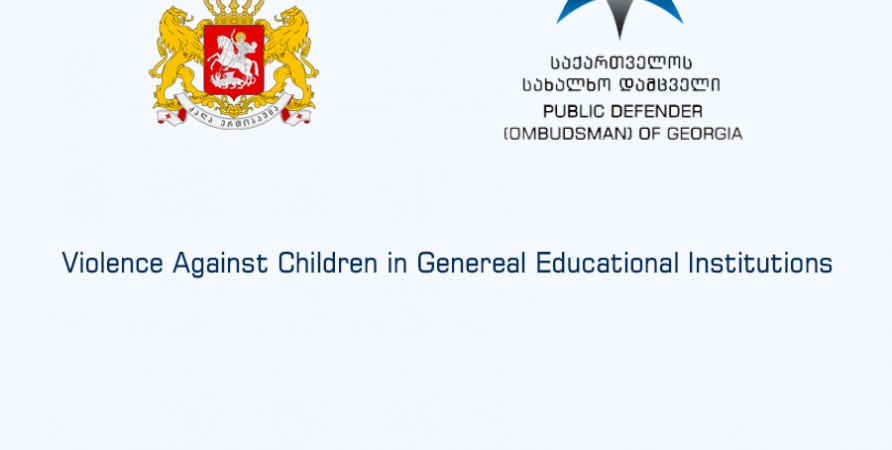Violence Against Children in Genereal Educational Institutions
On October 17, 2017, the Public Defender of Georgia presented results of the monitoring conducted by the Child’s Rights Center at the Office of Public Defender of Georgia during the 2016-2017 academic year to study violence against children in general educational institutions.
The monitoring was carried out within the framework of the project “Strengthening the Capacity of the Public Defender’s Child Rights Center” supported by the United Nations Children’s Fund (UNICEF).
This aspect of general educational schools has been monitored for the first time ever within the mandate of the Public Defender of Georgia. Representatives of the Public Defender paid visits to 109 general educational institutions countrywide, including 98 public schools, five private schools and six boarding schools.
The results of the monitoring made it clear that the protection of children from abusive approach and improper treatment remains a challenge in the system of general education: psychological and physical abuse of children by adults and peers is observed frequently; bullying2 among pupils is a widespread form of interaction among minors; awareness of pupils of their rights is poor; responsible persons lack competence regarding the mechanism of response to all forms of violence against children and hence, response is not undertaken in the best interests of the child; there is a shortage of psycho-social rehabilitation services for child victims
Students’ awareness of their rights or different forms of violence, as well as the competence of responsible persons in response mechanisms to various forms of violence against children, is low. Schools do not have a common policy against violence. 13.2% of schoolchildren and 4% of school staff do not regard beating as child abuse, 37% of schoolchildren and 12.7% of school staff do not regard hitting as child abuse, 42.5% of schoolchildren and 13.9% of school staff do not think that ear twitching is not violence. The monitoring showed similar attitudes to other forms of violence, including psychological violence.
Yelling was named by most of the students as a form of communication with them. 20.30% of schoolchildren reported of yelling by school resource officers, 47.10% said yelling was used as a form of communication by school administration, 61.50% named class teachers and 78.80% named other teachers. 25% of school staff does not consider yelling as violence.
The monitoring showed that school staff members are not well aware of the response mechanisms to child abuse. The Resolution of the Government of Georgia on the Approval of Referral Procedures for Child Protection was named only by 2.8% of the respondents as a response mechanism.
The Public Defender calls on the state to develop and implement a coordinated policy for the prevention of violence and improvement of response mechanisms in educational institutions. This will contribute to a comprehensive protection of pupils of educational institutions by considering the best interests of the child.















